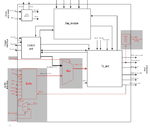preethi19
Full Member level 5
Hi i did a project in digital design and i had blocks like JTAG, control unit, buffer, clock generator, Tx unit. So i did the layout of the design using Cadence Encounter. Placement of cells were fully automatic. I didn't manually place the blocks. I understand what the term "top-level floorplanning" is and how for an efficient layout with consumed space, timing, power are considered while deciding how to place the blocks within the IC core. But i have no idea abt wat are the factors that needs to be considered and how to choose to place each block in an efficient manner. Can anyone pls give me a good link or pls list out the main factors that are always considered while doing top-level floorplanning. Pls help!!! Thank you!!! 
